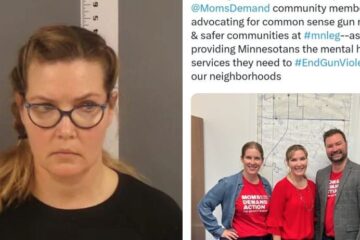John Lott Q&A | America’s Murder “Problem”
Many in the so-called “mainstream” media like to use America’s “murder epidemic” as a call to action for more restrictive gun laws. Yet new research shows that, far from being a national epidemic, U.S. murders are heavily concentrated in a very limited number of areas.
We recently touched base with criminologist and researcher John Lott, president of the Crime Prevention Research Center and author of the new book, The War On Guns: Arming Yourself Against Gun Control Lies, to find out the truth.
A1F Daily: You’ve recently conducted some research about the concentration of murders in the United States. What did you learn?
- Activate Your Own Stem Cells & Reverse The Aging Process - Choose "Select & Save" OR Join, Brand Partner & Select Silver To Get Wholesale Prices
- Get your Vitamin B17 & Get 10% Off With Promo Code TIM
- How To Protect Yourself From 5G, EMF & RF Radiation
- Protect Your Income & Retirement Assets With Gold & Silver
- Grab This Bucket Of Heirloom Seeds & Get Free Shipping With Promo Code TIM
- Here’s A Way You Can Stockpile Food For The Future
- Stockpile Your Ammo & Save $15 On Your First Order
- Preparing Also Means Detoxifying – Here’s One Simple Way To Detoxify
John Lott: Murder isn’t a nationwide problem; it’s a problem in a very small set of urban areas. In 2014, the worst 2 percent of counties accounted for 51 percent of the murders. And 5 percent of counties account for 68 percent of murders.
Yet even within these counties with all these murders, there are large areas without any murders. So these murders are concentrated in a small portion of these tiny areas. For example, Los Angeles County had the most murders, with 526. But large, high-population areas, such as West Los Angeles and the San Fernando Valley, have virtually no murders. In the case of Indianapolis, there were few murders in the northern half of the city or outside the 465 Highway loop.
Another way of looking at this concentration? Fifty-four percent of counties had zero murders; 69 percent had at most one murder.
There were 4.4 murders per 100,000 people in 2014. If the 1 percent of the counties with the highest number of murders somehow were to become a separate country, the murder rate in the rest of the US would have been only 3.4 in 2014. Removing the worst 2 percent or 5 percent would have reduced the U.S. murder rate to just 3.06 or 2.56 per 100,000, respectively. “Another way of looking at this concentration? Fifty-four percent of counties had zero murders; 69 percent had at most one murder.” — John Lott
Perhaps surprisingly, murders used to be even more concentrated. From 1977 to 2000, on average 73 percent of counties in any given year had no murders. This change may be a result of the opioid epidemic’s spread to more rural areas. But as of yet, no one has clearly shown what has caused this change.
If you are going to reduce murders, you have to deal with the problems in these urban areas.
A1FD: What is the significance of these findings?
Lott: The counties with no murders are also by far the counties with the highest gun ownership rates. The household gun ownership rate in rural areas was 111 percent greater than in urban areas. Suburban households are 28.6 percent more likely to own guns than urban households. Despite lower gun ownership, urban areas experience much higher murder rates. One should not put much weight on this purely “cross-sectional” evidence that looks across places at one point in time. But it is striking that so much of the country has both very high gun ownership rates and no murders.
The differences also raise real questions about comparing murder rates across countries. There are really three different types of places in the United States—places where there are no murders, places where there are a few murders, and places where murders are very common.
A1FD: Are you seeing any reporting of this in the so-called “mainstream” media?
Fox News, the Washington Times, Breitbart and a few others have covered this, but the “mainstream” media have ignored it.
For additional information dealing with gun control and the Second Amendment, check out John Lott’s newest book, The War On Guns: Arming Yourself Against Gun Control Lies. You can order The War On Guns directly from amazon.com or barnesandnoble.com.
Article first appeared at Americas 1st Freedom.














